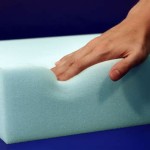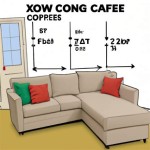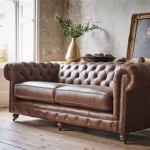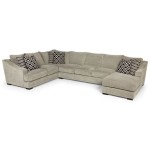Are Power Reclining Sofas Reliable? A Comprehensive Examination
The power reclining sofa has become a staple in many modern living rooms, offering convenience and comfort at the touch of a button. However, a common question arises: are power reclining sofas reliable? This article explores the factors that influence the reliability of power reclining sofas, examining potential issues, preventative measures, and considerations for determining overall dependability.
The perceived reliability of any electrical appliance, including power reclining sofas, stems from a combination of factors. These factors range from the quality of materials used in manufacturing to the frequency and manner of usage. A comprehensive understanding of these influences is essential for making informed purchasing decisions and ensuring the longevity of the sofa.
Understanding the Components of a Power Reclining Sofa
To properly assess the reliability of power reclining sofas, it is crucial to first understand their core components. These sofas integrate both mechanical and electrical systems to achieve their reclining function. The primary components include the frame, the reclining mechanism, the motor and electrical wiring, the upholstery, and the control panel or buttons.
The frame provides the structural integrity of the sofa. It is typically constructed from wood, metal, or a combination of both. The quality of the frame material and its construction directly impacts the sofa's overall durability. A poorly constructed frame can lead to instability, creaking, and eventual failure of the reclining mechanism.
The reclining mechanism is the mechanical component responsible for the actual reclining motion. It usually consists of metal linkages, hinges, and gears. The robustness of this mechanism is paramount for long-term reliability. Cheaper mechanisms are prone to bending, breaking, or becoming misaligned, leading to a malfunction. Regularly checking and lubricating moving parts can extend the lifespan of the mechanism.
The motor and electrical wiring are the heart of the power reclining function. The motor provides the force necessary to move the reclining mechanism, and the wiring connects the motor to the power source and control buttons. The quality of the motor is critical; a low-quality motor may be underpowered or prone to overheating and failure. Thorough testing and certification marks, such as UL or CE, can indicate adherence to safety and performance standards. In addition, the wiring must be properly insulated and routed to prevent shorts or damage.
The upholstery, while not directly affecting the reclining function, contributes to the overall perceived quality and longevity of the sofa. Durable upholstery materials, such as high-quality leather or performance fabrics, are less likely to tear, stain, or fade, preserving the sofa's appearance and value over time. The longevity of the upholstery impacts the overall satisfaction and perceived reliability of the sofa.
Finally, the control panel or buttons allow the user to activate the reclining function. These controls should be robust and responsive. Fragile buttons or unreliable switches can lead to frustration and a perception of poor quality, even if the underlying reclining mechanism is functioning correctly.
Common Issues and Factors Affecting Reliability
Several common issues can affect the reliability of power reclining sofas. These issues can range from minor inconveniences to major malfunctions requiring professional repair or replacement. Understanding these potential problems can help consumers make informed decisions and take proactive measures to prevent them.
One of the most frequent issues is motor failure. Over time, the motor can wear out due to continuous use, overheating, or manufacturing defects. Signs of motor failure include slow or erratic reclining movement, unusual noises during operation, or complete failure to recline. Replacing the motor is often a cost-effective solution, but the availability of replacement parts and the complexity of the repair should be considered.
Wiring problems are another common source of trouble. Damaged or frayed wires can cause short circuits, leading to motor malfunction or even posing a fire hazard. Inspecting the wiring regularly for signs of wear and tear is crucial. Avoid placing the sofa in a position where the wires can be easily pinched or crushed. If any wiring issues are detected, professional repair is recommended.
Mechanical problems with the reclining mechanism are also prevalent. Bent or broken linkages, stripped gears, or misaligned components can prevent the sofa from reclining smoothly or completely. These problems are often caused by excessive weight, uneven weight distribution, or forceful operation. Adhering to the sofa's weight capacity and avoiding abrupt or jerky movements can help prevent mechanical failures. Regular lubrication of the moving parts can also extend the life of the mechanism.
Upholstery damage, while not directly related to the reclining function, can significantly impact the sofa's overall appearance and perceived reliability. Tears, stains, and fading can make the sofa look worn and neglected, even if the underlying mechanical and electrical components are still functioning properly. Choosing durable upholstery materials and following proper cleaning and maintenance procedures can help keep the upholstery in good condition for longer.
Finally, control panel or button failures can also be problematic. Buttons can become stuck, unresponsive, or completely non-functional. This can be caused by dirt, debris, or wear and tear. Cleaning the control panel regularly and avoiding excessive force when pressing the buttons can help prevent these issues. If a button fails, it may be possible to replace it, but the availability of replacement parts can vary.
Strategies for Ensuring the Longevity of a Power Reclining Sofa
While the inherent quality of a power reclining sofa plays a significant role in its reliability, there are several strategies that consumers can employ to maximize its lifespan and minimize potential problems. These strategies include careful selection, proper usage, regular maintenance, and timely repairs.
Careful selection begins with choosing a sofa from a reputable manufacturer known for producing high-quality furniture. Reading reviews and comparing different models can provide valuable insights into the reliability and durability of various sofas. Consider factors such as the quality of the frame, the reclining mechanism, the motor, and the upholstery. Opting for a sofa with a longer warranty can also provide added peace of mind.
Proper usage is essential for preventing premature wear and tear. Adhering to the sofa's weight capacity is crucial. Avoid placing excessive weight on any one part of the sofa, as this can strain the frame and reclining mechanism. Avoid abrupt or jerky movements when reclining, as this can damage the mechanical components. Do not allow children or pets to climb or jump on the sofa, as this can also cause damage.
Regular maintenance is key to keeping the sofa in good condition. Vacuuming the upholstery regularly can help prevent dirt and debris from accumulating, which can cause wear and tear. Spot cleaning spills immediately can prevent stains from setting in. Applying a leather conditioner or fabric protector can help protect the upholstery from damage. Periodically check the wiring for signs of wear and tear. Lubricating the moving parts of the reclining mechanism can help ensure smooth and reliable operation.
Timely repairs are essential for addressing any problems before they escalate. If you notice any signs of a malfunctioning motor, damaged wiring, or a faulty reclining mechanism, seek professional repair as soon as possible. Ignoring these problems can lead to more extensive damage and potentially require more costly repairs or even replacement of the sofa. Using a qualified furniture repair technician is crucial to ensure that the repairs are done correctly and safely.
In addition to these strategies, consider the environment in which the sofa is placed. Avoid placing the sofa in direct sunlight, as this can cause the upholstery to fade. Protect the sofa from extreme temperatures and humidity, as these can damage the frame and upholstery. Keeping the sofa clean and free of dust and debris can also help extend its lifespan.
Ultimately, the reliability of a power reclining sofa is a function of its initial quality, the manner in which it is used, and the care it receives. By making informed purchasing decisions, practicing proper usage, performing regular maintenance, and addressing problems promptly, consumers can significantly increase the lifespan and reliability of their power reclining sofas.

Are Recliner Sofas Reliable Four Centuries

Signature Design By Ashley Draycoll Reclining Power Sofa Com

Grant Power Reclining Sofa

Signature Design By Ashley Draycoll Power Reclining Fabric Sofa 765048

Safe Bet Power Reclining Sofa With Headrest

Signature Design By Ashley Draycoll Reclining Power Sofa Com

Draycoll Power Reclining Sofa Loveseat Slate

Draycoll Slate Power Reclining Loveseat Louisville Warehouse

Pinnacle White Power Reclining Sofa Mas Furniture Mueblería

Draycoll Slate Power Reclining Sofa Set Louisville Warehouse








